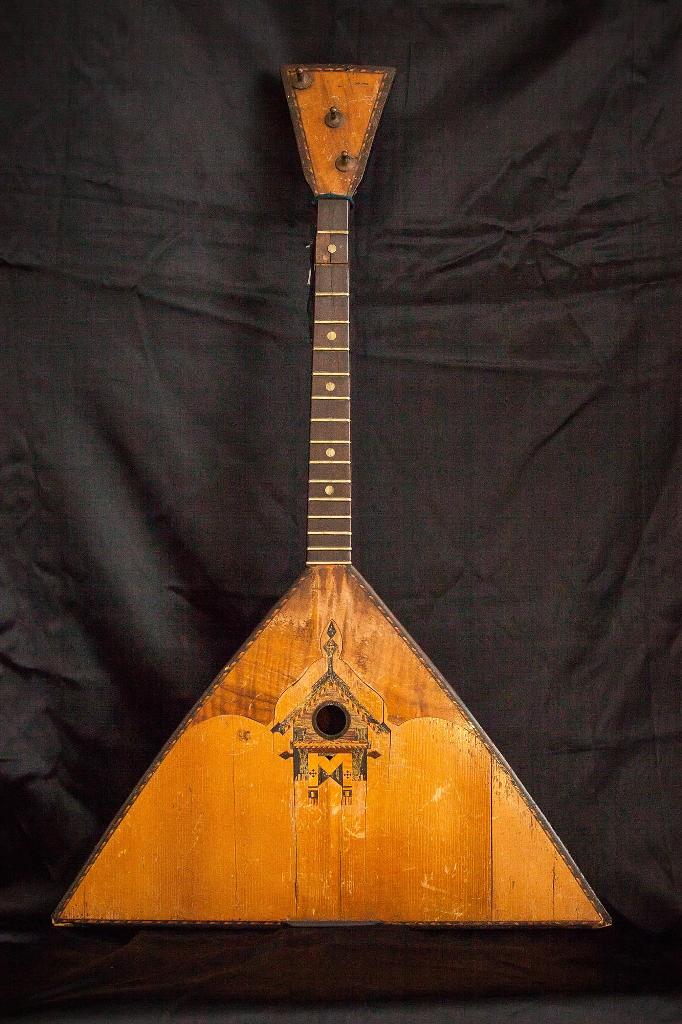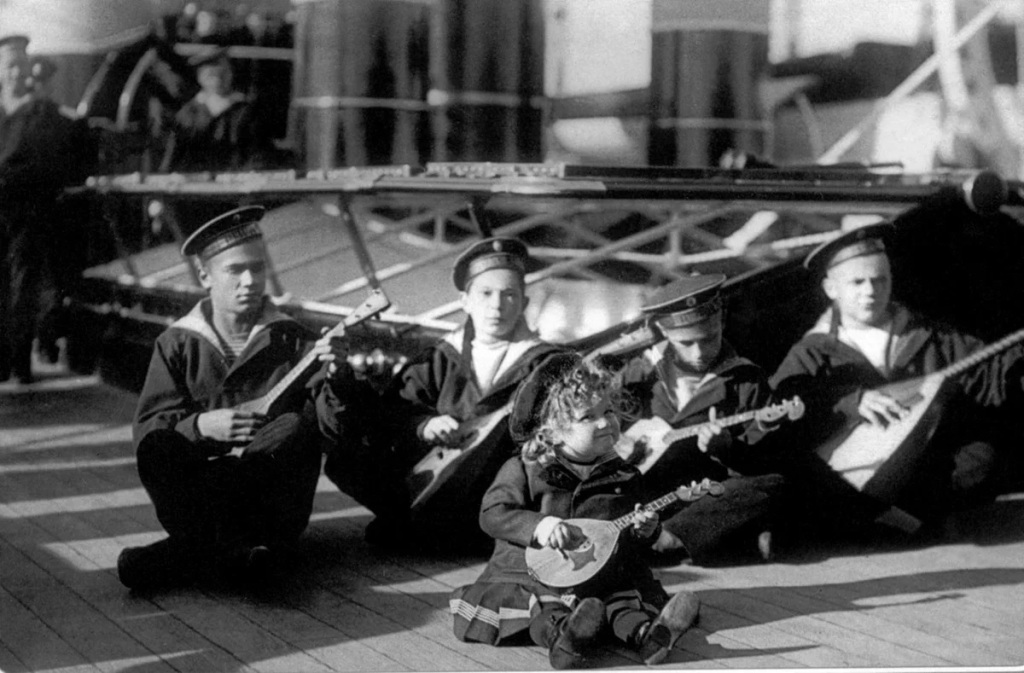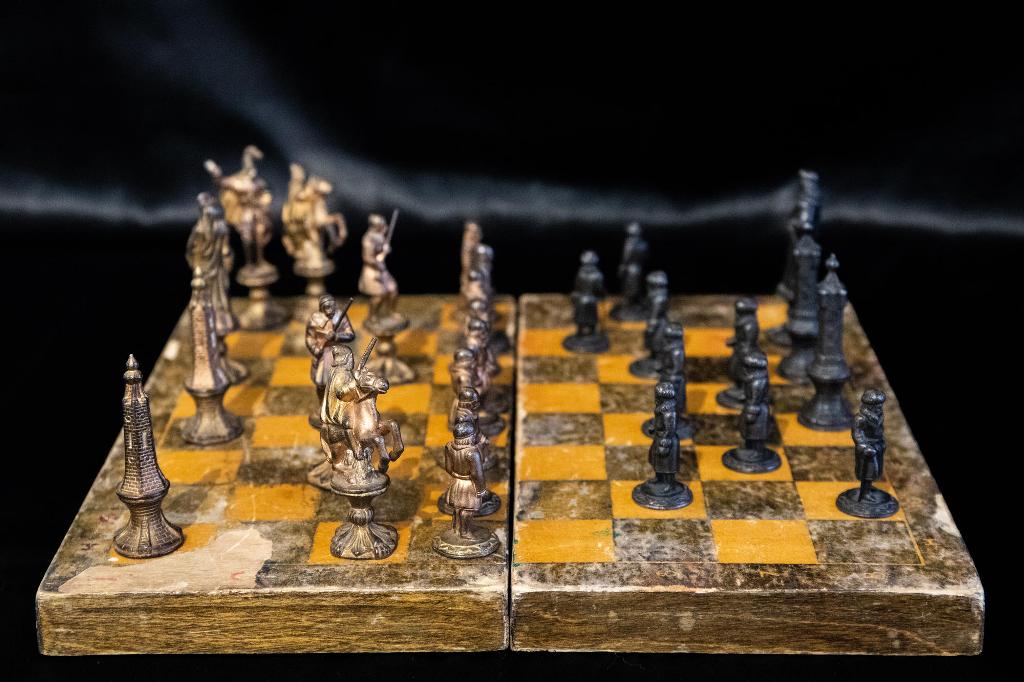PHOTO: recreation of the dining room in the former Governors Mansion, Tobolsk
Between August 1917 and April 1918 Emperor Nicholas II and his family were held under house arrest in the the former governor’s mansion [renamed “House of Freedom” by the Bolsheviks] in Tobolsk, Siberia.
In the beginning, the Imperial family were allowed to walk to the nearby Church of the Annunciation for worship, however, this was halted due to “concerns for their safety”. Despite this, the security regime in Tobolsk was more relaxed than in Tsarskoye Selo, allowing the family to lead a fairly calm life.
On 26th April 2018, the Museum of the Family of Emperor Nicholas II opened in the former Governor’s Mansion, following an extensive restoration. The museum is the first museum in Russia, dedicated entirely to Emperor Nicholas II and his family. Many original elements from the time that the Imperial Family lived here have been preserved. The interiors have been partially restored, each room featuring unique exhibits from their daily life. The chapel, which was set up in the ballroom of the mansion was also recreated, and consists of a folding iconostasis and an altar.
In addition, the museum features many unique personal items belonging to the Imperial family: Imperial porcelain, napkins with monograms, silver appliances, etc. One of the most precious exhibits is Empress Alexandra Feodorovna’s silk shawl. The Empress gave the shawl to the wife of the doctor in gratitude, who had treated the Tsesarevich Alexei.
Below, is a selection of five exhibits from the Museum of the Family of Emperor Nicholas II in Tobolsk:
Balalaika of Tsesarevich Alexei Nikolaevich [updated on 22 June 2022]
Empress Alexandra Feodorovna, a German by birth, enjoyed the sound of a three-stringed balalaika. She first heard the tunes of the Cossack-balalaika players when she first arrived in Russia. Initially, Alexandra Feodorovna wanted her daughters to take up playing a folk instrument, but in the end, it was her son Tsesarevich Alexei Nikolaevich who became interested in the instrument. Judging by a photograph [seen below] taken on the Imperial yacht Standart in 1907, Alexei had already picked up the balalaika at the age of three.
When the Tsesarevich grew up, he was appointed a music tutor, Alexander Alekseevich Resin (1857-1933). But Resin was dedicated to commanding the tsarist guard, so instead Alexei was offered a replacement – the Court adviser Alexander Nikolaevich Zarubin.
Zarubin played in an amateur orchestra of Russian folk instruments, which became the first such group in Russia. Zarubin conducted 12 balalaika lessons with Alexei Nikolaevich. For these lessons, the Tsesarevich bought one professional instrument for himself and presented two more to his fellow cadets – Vasily Ageev and Evgeny Makarov.
Alexei’s balalaika was made by the famous craftsman Semyon Ivanovich Nalimov (1857-1916), who from 1895 to 1917, produced more than 300 models of musical instruments. The soundboard of the instrument was decorated with inlay – a small stylized image of a house, which is assembled from separate pieces of wood of different shades. The body of the balalaika was carefully polished and varnished.
PHOTO: Tsesarevich Alexei Nikolaevich with his balalaika, 1907
Empress Alexandra Feodorovna encouraged her son’s passion. From 1917, she included mandatory balalaika lessons in his schedule of classes, which were supposed to take place twice a week. Sadly, however, these lessons never began: after the February Revolution of 1917, Nicholas II abdicated the throne, and in August of that year, the Imperial family were sent into exile to Tobolsk.
Alexei Nikolaevich took the instrument with him to Tobolsk, although there was no one to teach him in Siberia. In April 1918, when the Imperial family were transferred to Ekaterinburg, Alexei still held on to his passion for the balalaika.
Following their murders in July 1918, and the liberation of Ekaterinburg by the White Army, among the items found in the Ipatiev House, were two musical instruments, including a three-stringed balalaika. In addition, was a book Правила игры на балалайке [Rules of Playing the Balalaika], embossed with a crown and Alexei’s monogram on the cover.
Alexei’s balalaika was transferred to the collection of the Tobolsk Historical and Architectural Museum, where it remained until 2018, when the well-known St. Petersburg collector Valery Bruntsev transferred the instrument to the collection of the Museum of the Family of Emperor Nicholas II.
“Travels in the East of Nicholas II, Emperor of Russia When Tsesarevich” by Esper Ukhtomsky
On 5th November (O.S. 23rd October) 1890, Tsesarevich Nicholas Alexandrovich (future Emperor Nicholas II) embarked on a seven-month journey around the greater part of the Eurasian continent.
The total length of the journey exceeded 51,000 kilometres, including 15,000 km of railway and 22,000 km of sea routes, aboard the cruiser Pamyat Azov. The Tsesearvich’s journey took him to Greece, Egypt, India, Ceylon, Siam, Singapore, French Indochina, China, and Japan.
Nicholas Alexandrovich was accompanied on the journey by a close confidant Prince Esper Esperovich Ukhtomsky (1861-1921), a diplomat, publisher and Oriental enthusiast. He later published an account of this expedition: Travels in the East of Nicholas II, Emperor of Russia When Tsesarevich. Illustrations for the publication were made by the Russian artist Nicholas Nikolaevich Karazin (1842-1908).
The book was written in close consultation with Nicholas II, who personally approved each chapter. It took six years to complete, and was published in three volumes between 1893 and 1897 by Brockhaus, in Leipzig. Despite being expensive at 35 roubles, it still ran to four editions. Empress Alexandra Feodorovna bought several thousand copies for various government ministries and departments, and a cheaper edition was subsequently printed. The work was translated into English, French, German and Chinese, with a copy being presented to the Chinese Emperor and Empress in 1899 by the Russian envoy
Manila shawl of Empress Alexandra Feodorovna
This white natural silk shawl belonged to Empress Alexandra Fedorovna. The Empress’s wardrobe included several Manila shawls, which were popular in the early 20th century.
The name of the product was derived from the capital of the Philippines [a former Spanish colony] – Manila. In the 16th century, Spanish galleons arrived in the harbour, their holds full of china, precious stones, spices and fabrics including silk capes, from China. The shawls eventually found their way to Spain where they became a popular commodity. By the 18th century, they were already an important accessory of Spanish fashionistas and over time acquired the status of a luxury accessory. Not only were Manila shawls worn thrown over the shoulders: they were also used to decorate sofas, pianos and even walls. They became an important accessory for flamenco dancers.
The first silk shawls were decorated with hand-made embroidery with traditional Chinese motifs: dragons, bamboo, pagodas. Later, they were replaced by flowers and birds more familiar to Europeans, and brushes with special weaving appeared along the edges. The most common colours for Manila shawls were black, white, ivory and shades of red.
Perfume Coty of the Grand Duchess Tatiana Nikolaevna
In 1904, the French perfumer François Coty (1874-1934), created a perfume brand under his own name. The design of the bottle for his first fragrance was developed by the French company “Baccarat”. At first, few people were interested in the perfumes of an unknown perfumer, but once Francois Coty broke a bottle with them in a Parisian store, his luck changed. The scent filled the room and immediately attracted buyers. A few weeks later, Coty’s perfume was already on sale in department stores, boutiques and hairdressers throughout Paris.
François Coty became one of the most popular perfumers of the time. Before him, perfume was a luxury item available only to wealthy people. Coty created a line of fragrances in which the cost depended on the size and type of bottle. He said, “Give a woman the best product you can create, wrap it in simple but elegant packaging, set a reasonable price, and you have a business of a scale the world has never seen.”
The collection of the Museum of the Family of Emperor Nicholas II contains a glass bottle of perfume “Corsican Jasmine”, which was used by Grand Duchess Tatiana Nikolaevna. This fragrance was created by François Coty in 1906 and named after his homeland – the island of Corsica. The scent of “Corsican Jasmine” was also loved by the famous Russian poet Marina Tsvetaeva (1892-1941).
Nicholas II and Chess
Emperor Nicholas II had many interests and hobbies. He traveled around Russia by train, sailed with his family on the Imperial Yacht Standart, cycled, rowed, hiked and played tennis. The monarch was also fond of hunting, cinematography and photography, he loved to drive a car and patronized the Imperial Russian Automobile Society.
Nicholas II did much to popularize chess in Russia. For example, the big tournament in memory of the famous Russian chess player Mikhail Chigorin (1850-1908) in 1909, was partially financed by the Emperor, who donated a thousand rubles. The Emperor personally attended the tournament and awarded the finalists with the title of grandmaster, the winners received vases made by the prestigious Imperial Porcelain Factory.
In 1914, the Emperor supported the creation of the All-Russian Chess Union. With his approval, chess tournaments, international congresses and chess competitions were held in Russia.
While in exile in Tobolsk, the Emperor spent his days usually engaged in physical activities, such as sawing wood, working in the garden, or shovelling snow in the winter. In the evenings, members of the Imperial Family whiled away the time books, embroidery and playing chess.
The chess set in the collection of the Museum of the Family of Emperor Nicholas II was made at the Kasli plant in the first half of the 19th century. Kasli casting was highly valued not only in Russia, but also in Europe, for its excellent quality and attention to detail.
***
Click on the IMAGE below to watch a VIDEO tour [in Russian] of the the Museum of the Family of Emperor Nicholas II in Tobolsk, which includes the interiors and many exhibits. Duration: 19 minutes, 32 seconds
© Paul Gilbert. 22 June 2022







You must be logged in to post a comment.